
| Publisher: | MCD/Farrar, Straus and Giroux | |
| Genre: | International Mystery & Crime, Mystery & Detective, Crime, Thrillers, Fiction | |
| ISBN: | 9780374261245 | |
| Pub Date: | November 2018 | |
| Price: | $28 |
| Fiction |
by Hideo Yokoyama, trans. by Louise Heal Kawai
Seventeen by Hideo Yokoyama (Six Four) is an investigative thriller that focuses on the real-life tragedy of Japan Airlines Flight 123, a 1985 crash that left 520 dead, while drawing heavily on the author's experience as a reporter at a local newspaper in Gunma Prefecture after the passenger plane crashed into a nearby mountain range. The novel follows fictional protagonist Kazumasa Yuuki, an experienced reporter at the North Kanto Times in Gunma, as it alternates between the frenzy of the 1985 newsroom and 2003, when Yuuki attempts to climb the famously dangerous Tsuitate rock face on Mount Tanigawa. Nicknamed "Devil's Mountain," Tanigawa claimed 779 lives prior to Yuuki's attempt, and he is understandably nervous.
After the jet crashes, Yuuki moves quickly to coordinate his paper's coverage. Reporters sent to the mountain return shaken by the gruesome site strewn with body parts. Office politics become a major stumbling block in tackling the enormous tragedy, as Yuuki struggles with powerful personalities and factional divides that threaten to paralyze the newsroom. Perhaps Yuuki's greatest challenge in covering the disaster, however, is his strong sense of journalistic ethics, which often puts him at odds with employees of the newspaper operating under the sometimes perverse incentives of for-profit journalism.
Seventeen's most gripping moments come with Yuuki on the verge of enormous scoops, struggling to authenticate information while the deadline comes nail-bitingly close. It is a thoughtful take on the purposes good reportage should serve, as well as a meditation on how brief moments in time can shape the rest of our lives. --Hank Stephenson, bookseller, Flyleaf Books, Chapel Hill, N.C.
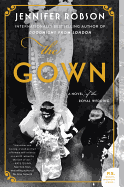
| Publisher: | Morrow | |
| Genre: | Sagas, Historical - 20th Century, General, Romance, Fiction, Historical | |
| ISBN: | 9780062674951 | |
| Pub Date: | December 2018 | |
| Price: | $16.99 |
| Fiction |
by Jennifer Robson
It's more than a year after the Allies declared victory, and the people of Great Britain are still facing the lingering privations of wartime. Princess Elizabeth's engagement to Prince Philip of Greece gives the citizenry a celebration to look forward to. For the coterie of seamstresses working under London designer Norman Hartnell, it means something else: a once-in-a-lifetime chance to work on Elizabeth's wedding gown.
Novelist Jennifer Robson (Moonlight over Paris) stitches together the story of The Gown through the narratives of two seamstresses: the young Englishwoman Ann Hughes and Miriam Dassin, a French refugee who becomes Ann's colleague and friend. Woven throughout is the story of Heather Mackenzie, Ann's Canadian granddaughter, who inherits a box of elaborate embroidered flowers after her grandmother's death. Puzzled and intrigued by the flowers, which bear a striking resemblance to those on Queen Elizabeth's wedding gown, Heather hops a plane to London to trace the mystery of her grandmother's life and career.
Robson constructs her narrative with the skill and precision displayed by Ann and Miriam as they work on the gown. All three protagonists are dealing with loss and heartbreak. Ann is still mourning her brother and her parents, who died during the war. Miriam carries the trauma of her family's deaths and her own experiences at Ravensbrück. Heather's grief over losing Ann is compounded by being laid off from her magazine job, and her gradual realization that her beloved "Nan" had an entire life in England that she never shared. Like the gown itself and the tapestries Miriam creates, Robson's novel stitches together disparate components into an elegant whole. --Katie Noah Gibson, blogger at Cakes, Tea and Dreams

| Publisher: | Harper | |
| Genre: | Psychological, Family Life, General, Literary, Fiction | |
| ISBN: | 9780062459138 | |
| Pub Date: | November 2018 | |
| Price: | $26.99 |
| Fiction |
by Helen Schulman
In Come with Me, Helen Schulman (This Beautiful Life) crafts a story about the desire to cheat the death of possibility. Amy Reed's tech wunderkind boss, Donny, has developed an algorithm that would allow people to explore their "multiverses"--alternative realities in which they made different choices and their lives played out in infinitely varied ways. Relying on a vaguely described combination of data aggregation, math and virtual reality, Donny wants to offer his customers "a personalized crystal ball" that lets them find out "what if." And he wants to beta-test it on Amy.
Amy is intrigued, but barely has the bandwidth for one universe, let alone an infinite number of them. She's keeping her family afloat on a part-time salary while her three sons struggle to thrive in the Stanford-dominated, capital-driven pressure cooker of Palo Alto. Meanwhile, her husband, Dan, an unemployed journalist, is trying to escape his reality in a more conventional way--by following a brilliant, incandescently sexy photographer named Maryam on an impulsive (and secret) reporting trip to Japan.
Overwhelmed and underappreciated, Amy gives in to the seductive pull of finding out what could have been, and what could have been prevented. Told from many shifting perspectives, Come with Me is more illustrative of the dramatically different universes that can exist within just one reality--or one city, or one family--than it is of technology's increasingly expansive role in our lives. It is a sharply observed, entertaining and occasionally heartrending novel that may help readers appreciate their own, singular, similarly flawed realities. --Hannah Calkins, writer and editor in Washington, D.C.
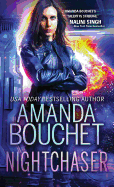
| Publisher: | Sourcebooks Casablanca | |
| Genre: | Paranormal - General, Romance, Fiction, Science Fiction | |
| ISBN: | 9781492667131 | |
| Pub Date: | January 2019 | |
| Price: | $7.99 |
| Romance |
by Amanda Bouchet
Tess Bailey, rebel captain of the spaceship Endeavour, has run out of luck. Facing what she believes is certain destruction by the Dark Watch, she jumps her ship and ragtag crew into a black hole--and survives. The badly damaged craft limps to the nearest docks, at Albion Five, where she finds a handsome and dangerous starship mechanic, Shade Ganavan. Unfortunately, the man has as many secrets as Tess; Shade's primary occupation is bounty hunting, and Tess is the galaxy's most wanted fugitive, with an astronomical price on her head. While patching holes in the Endeavour's outer skin and being charmed by Tess and her crew, Shade struggles to decide if he will help Tess escape or turn her in to the authorities and claim the reward. The attraction between them is undeniable, but when they finally give in to the irresistible pull, betrayal quickly follows. Now Tess is once again running for her life, pursued by both Shade and the most powerful men in the Dark Watch. Will she survive or will luck truly desert her this time?
Amanda Bouchet (the Kingmaker Chronicles) fills Nightchaser with edge-of-the-seat adventure, steamy romance and warm humor. Bouchet's fans will be delighted with this first entry in what promises to be an engrossing trilogy. --Lois Faye Dyer, freelance book reviewer
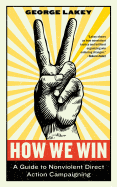
| Publisher: | Melville House | |
| Genre: | American Government, National, Social Classes & Economic Disparity, Political Advocacy, Violence in Society, Social Science, Political Science | |
| ISBN: | 9781612197531 | |
| Pub Date: | December 2018 | |
| Price: | $16.99 |
| Political Science |
by George Lakey
George Lakey (Viking Economics) has been an activist in the U.S. since he was first arrested in 1963 during the civil rights movement. In 1964, he co-wrote the widely influential Manual for Direct Action. The political environment has changed substantially since then. How We Win is a new primer that draws on Lakey's decades of experience and includes contributions from three other seasoned activists.
Lakey offers "movement-building approaches that win major changes rather than small reforms." In clear prose and well-organized chapters, he lays out practical advice on how to set goals, plan strategies, create healthy group dynamics, handle attacks and avoid conflicts with groups working toward similar goals in different ways. He addresses the question of violence, the importance of vision and the value and limitations of social media. Real change, he says, is not accomplished by protests or impulsive actions, but by sustained campaigns that build into movements. "Protests are usually organized to express grief, anger, or plain opposition to an action or policy.... Campaigners, by contrast, plan from the start to do a series of nonviolent actions and continue until the goal is reached." Readers need not agree with Lakey's politics to benefit from his advice. Anyone who hopes to change the world will want to pick up this book. --Sara Catterall
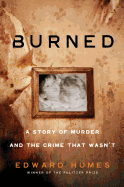
| Publisher: | Dutton Books | |
| Genre: | True Crime, Law, General, Forensic Science, Murder, Social Science, Criminology | |
| ISBN: | 9781524742133 | |
| Pub Date: | January 2019 | |
| Price: | $28 |
| Starred | Social Science |
by Edward Humes
Late one April night in 1989, Shirley Robinson opened her door to find neighbor Jo Ann Parks framed by the orange glow of a fire behind her. Parks's converted rental apartment was engulfed in flames; she escaped but her three young children perished in the intense blaze. Fire investigators concluded that Parks set the fire with the intent of killing her children and she was sentenced to life in prison. But was she a monster or the victim of flawed science?
In Burned, Pulitzer Prize-winner Edward Humes (Garbology, Monkey Girl) questions Parks's conviction based on flaws in fire science and in the criminal justice system. Arson is "the one criminal act that consumes rather than creates" evidence, and an accidental fire can easily be interpreted as arson. Was the fact that Parks's previous house also caught fire relevant to the investigation? Did investigators ignore the damage caused by flashover, which turns "a fire in a room into a room on fire?" Is "negative corpus," which insists on the cause of a fire when other possibilities have been eliminated, valid even in the absence of physical evidence? Did investigators ignore advances in fire science and draw biased conclusions?
These questions were enough for the California Innocence Project (CIP) to take Parks's case. In 2018, under habeas corpus, Parks and CIP were granted a hearing to challenge the initial investigators' findings as discredited "junk science" that masqueraded for forensic science (but is still widely practiced). Humes shows how the story of Jo Ann Parks wrongful conviction has the power to upend arson investigation as we know it. --Frank Brasile, librarian
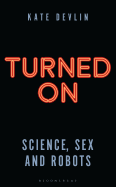
| Publisher: | Bloomsbury Sigma | |
| Genre: | Technology & Engineering, Computers, Human Sexuality, Human Sexuality), Human Sexuality (See Also Psychology, Psychology, Intelligence (AI) & Semantics, Human Sexuality (see also SOCIAL SCIENCE, Social Science, Robotics | |
| ISBN: | 9781472950895 | |
| Pub Date: | December 2018 | |
| Price: | $28 |
| Social Science |
by Kate Devlin
If the title of Kate Devlin's Turned On: Science, Sex and Robots is eye-catching, mission accomplished! Devlin employs a cheeky writing style to discuss the serious academic work for which she is best known: the intersection of robots and human sexuality. Turned On, far from being salacious, covers the history, psychology and philosophical underpinnings of artificial intelligence (AI) as it relates to intimate relationships. "Most of all, it's about being human in a world of machines."
In the 21st century, robots can be purchased at department stores (Roomba vacuums, for example), and AI is ubiquitous (witness Apple's Siri and Amazon's Alexa). Humans, with a predilection to believe that any "semblance of human-like behavior" indicates a "degree of sentience," often anthropomorphize inanimate objects. If people respond emotionally to a disembodied voice, why not add a body to it? Devlin identifies the challenges and benefits of nonhuman companions as she charts the course from sex toys to humanoid sex robots. Will sex robots with AI be designed only for physical needs, or will emphasis "be placed firmly on interactions and responses"? Throughout her book, Devlin, senior lecturer in the department of computing at Goldsmiths, University of London, introduces people with sex doll fetishes and engineers who built working prototypes of sex robots. Beyond the obvious titillation of her title, she persuasively explores the need for "a serious... conversation about what it means to be human when surrounded by machines that might one day care for us and about us." --Cindy Pauldine, bookseller, the river's end bookstore, Oswego, N.Y.
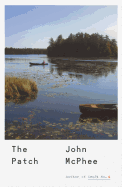
| Publisher: | Farrar, Straus and Giroux | |
| Genre: | Quotations, Reference, Sports & Recreation, Literary Collections, Essays | |
| ISBN: | 9780374229481 | |
| Pub Date: | November 2018 | |
| Price: | $26 |
| Essays & Criticism |
by John McPhee
John McPhee was born in 1931, began contributing to the New Yorker in 1963 and is still one of its staff writers. He is also the author of 32 books, all nonfiction. In The Patch, he offers six previously published essays under the heading of "The Sporting Scene," as well as a second section he calls an "album quilt" of excerpts from uncollected longer pieces. "I didn't aim to reprint the whole of anything. Instead I was looking for blocks to add to the quilt, and not without new touches, internal deletions, or changed tenses--trying to make something, not just preserve it, and hoping the result would be engaging to read."
Fishing, football, golf, lacrosse and New Jersey bears are his subjects in the first section, all viewed from characteristically unusual angles, accented by his dry humor and exact turns of phrase. McPhee has a broad curiosity, and a love of natural beauties and fine technical details. In "The Patch," he interweaves his life in fishing--fly fishing for chain pickerel in particular--with the story of his father's death. "The Orange Trapper" tells of his obsession with picking up and interpreting lost golf balls (he does not play golf). The "album quilt" is an effective and carefully composed sampler of nearly everything that has ever interested him and includes many snippets of his celebrity profiles from the 1950s and '60s. His fans will enjoy this collection, and it is not a bad introduction to McPhee's long and stellar career. --Sara Catterall
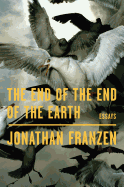
| Publisher: | Farrar, Straus and Giroux | |
| Genre: | Biography & Autobiography, Literary Figures, Literary Collections, Essays | |
| ISBN: | 9780374147938 | |
| Pub Date: | November 2018 | |
| Price: | $26 |
| Essays & Criticism |
by Jonathan Franzen
The End of the End of the Earth gathers 16 of acclaimed author Jonathan Franzen's essays into a collection as introspective in tone as it is outward-facing in content. "The Essay in Dark Times," for example, reflects on the genre of the personal essay in an increasingly individualistic and self-destructive moment politically and environmentally. To that end, Franzen considers the fallout of his essay (reproduced later in the collection) that was critical of the Audubon Society, revealing intimate and thoughtful questions of subjectivity, writing and revising.
While Franzen tends to focus on his tender obsession with birding--and by extension the world's pressing environmental concerns--the collection also covers other subjects, like his friendship with author William Vollmann and his reflections on Edith Wharton as a writer and woman. The End of the End of the Earth manages both to incite and soothe as it delves into overlooked topics. Over the course of his career, Franzen has become an expert at burrowing into moments others take for granted, a literary skill that always brings up new insights, concerns and revelations. Even in his engrossing essays on birding in Antarctica, South America and Egypt, he connects large-scale destruction with quiet, personal consideration. These essays celebrate the process of internalizing the outside concern, person or species. In this way, birds are the perfect encapsulation of the collection, rejoicing in their "radical otherness.... They are always among us but never of us." --Alice Martin, freelance writer and editor
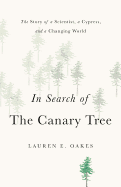
| Publisher: | Basic Books | |
| Genre: | Biography & Autobiography, State & Local - Pacific Northwest, Polar Regions, United States, Science, Fossil Fuels, Anthropology, Biology, Regional, History, Natural Resources, Life Sciences, Ecosystems & Habitats, Coastal Regions & Shorelines, Wildlife, Botany, Agriculture, Native American, Ethnic Studies, Women, Nature, Trees, Wilderness, Personal Memoirs, Ecology, Plants, Social Science, Native American Studies, Technology & Engineering, Power Resources, Human Geography, Forestry, Forests & Rainforests, Cultural & Social, Global Warming & Climate Change, Endangered Species, Essays | |
| ISBN: | 9781541697126 | |
| Pub Date: | November 2018 | |
| Price: | $27 |
| Starred | Science |
by Lauren E. Oakes
In the last couple years, dozens of climate change-related books have been published. Some are hopeful, some despairing, some with a more scientific bent and others of a more philosophical nature. Ecologist Lauren E. Oakes's In Search of the Canary Tree: The Story of a Scientist, a Cypress, and a Changing World combines all of these qualities in a magnificent tale about her hunt for the dying yellow cedar in Alaska's remote wilderness. It's based on Oakes's doctoral research project, how she came up with the topic and how she carried out her research. Such a premise may sound dry, but the scientist's breezy writing style and talent for storytelling makes this one of the most engaging climate-centered reads around.
It's also an enlightening look at how science gets done. The story begins with Oakes pondering which scientific questions to ask and the likelihood that she can answer them. It then focuses on team-building as Oakes interviews a diverse group of scrappy and determined scientists to assist her field research. The ambitious crew embarks for Alaska, where they live for several weeks among some of the world's oldest trees. Oakes gets the data she needs to finish her dissertation, but also learns a compelling lesson: "What I do matters in spite of how seemingly insignificant I am in the face of climate change." Engaging and galvanizing, In Search of the Canary Tree is about more than a rare tree--it's about nature's (and humanity's) capacity for resilience in a changing world. --Amy Brady, freelance writer and editor
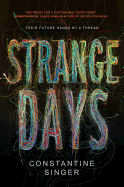
| Publisher: | Putnam | |
| Genre: | Young Adult Fiction, Alien Contact, Action & Adventure, Science Fiction, Diversity & Multicultural | |
| ISBN: | 9781524740245 | |
| Pub Date: | December 2018 | |
| Price: | $17.99 |
| Children's & Young Adult |
by Constantine J. Singer
Seventeen-year-old Alex Mata lives an unexciting life in Los Angeles: he likes playing his guitar, tagging walls, skateboarding and hanging out with his friends. When he begins hearing ghostly music and a phantom voice, he is convinced these are signs he may be schizophrenic like his deceased uncle, and keeps them a secret from his parents.
Then, an alien murders Alex's parents in a manner similar to other recent attacks, dubbed Incursions, taking place across the world. The government denies these attacks are happening and, Alex, knowing no one will believe him, flees. Prompted by his inner voice, Alex travels to tech pioneer Jeffrey Sabazios's compound in Seattle; Sabazios believes the Incursions are real and promises security from alien hacking through his Live-Tech earpods and screens. At the compound, Alex discovers that his inner voice and music are connected to something greater: he is a "witness," a person who can move through time and change "human futures." Sabazios plans to use Alex and other teen witnesses at the compound to stop the invasion, sending them to "desired future events" where they can create the best outcome. But Alex grows suspicious of Sabazios's motives: Should he listen to those around him--or the voice in his head?
Singer's imaginative, contemporary sci-fi is perfect for fans of Marie Lu's Warcross or M.T. Anderson's Landscape with Invisible Hand. Readers will find their reality reflected in Singer's diverse cast of characters and in technology that feels authentic for use in the not-so-distant future. --Clarissa Hadge, bookstore manager, Trident Booksellers & Cafe, Boston, Mass.

| Publisher: | Disney-Hyperion | |
| Genre: | Fantasy & Magic, Monsters, Juvenile Fiction, Action & Adventure | |
| ISBN: | 9781484788608 | |
| Pub Date: | November 2018 | |
| Price: | $16.99 |
| Children's & Young Adult |
by Zack Loran Clark, Nick Eliopulos
Twilight of the Elves continues the exploits of best friends Zed, a sorcerer-in-training, and Brock, a merchant's son with a talent for theft. Their friendship has become strained, however, since they were drafted into the Adventurers Guild, the city of Freestone's last line of defense against outside Dangers. Brock is engaged in a smuggling scheme to keep Zed's infernal (and illegal) magic a secret; Zed is plagued by ominous nightmares, but is too frightened to tell Brock. Additionally, Freestone has taken in dozens of elf refugees--the elves are fleeing an army of their own undead friends and relatives, risen and led by a mysterious figure known as the Lich. The Freestoners, strapped for resources, are frustrated with the shantytown and are often hostile to the refugees. Everything collides when the elven Queen Me'Shala asks the Adventurers to free the city of Llethanyl from the Lich and his army of the dead.
Twilight of the Elves, like its predecessor, The Adventurers Guild, is great fun punctuated by increasingly scary dangers. The series continues to tackles deeper issues of inclusion and exclusion: Zed, the son of a human mother and elf father, struggles to belong with either community. And while the elves resent their treatment by the Freestoners, they, too, have a history of prejudice; night elves are viewed with suspicion by the other elven clans. Authors Zack Loran Clark and Nick Eliopulos don't preach, but instead set up tense situations and let young readers watch them play out. In the end, though, there is a firm message: "You have to work with others, people who see things differently than you do, in order to overcome life's greatest challenges." --Ali Davis, freelance writer and playwright

| Publisher: | Knopf | |
| Genre: | Biography & Autobiography, Politics & Government, Girls & Women, Social Activists, Social Science, Juvenile Nonfiction | |
| ISBN: | 9780525579014 | |
| Pub Date: | November 2018 | |
| Price: | $18.99 |
| Children's & Young Adult |
by Kirsten Gillibrand, illust. by Maira Kalman
In her first book for children, New York Senator Kirsten Gillibrand (Off the Sidelines) shares the history of women's suffrage in the United States, along with the narratives of 10 individuals who fought for equal voting rights.
Gillibrand introduces readers to Susan B. Anthony, who "tried to vote for president and was arrested!" But after her death, when the 19th Amendment was passed, it became known as the Susan B. Anthony Amendment. The senator acquaints her audience with Sojourner Truth and Harriet Tubman, women born into slavery who both went on to join the voting rights movement, and Alice Paul, who helped organize the first national parade for women's suffrage. Also included is Jovita Idár, a teacher, journalist and founder of the League of Mexican Women, who fought for women's rights and education. Maira Kalman's (Thomas Jefferson: Life, Liberty and the Pursuit of Everything) vivid, striking paintings accompany each woman's story, the full-page portraits emphasizing the pioneers' forceful presences in the country's history. Her powerful brushstrokes and eye-catching colors fittingly mirror the actions and spirits of her subjects.
Admiration and respect emanate from the pages of Bold & Brave. Gillibrand covers some women who may already be familiar to her audience, as well as some who are more obscure but equally worthy of recognition. This reminder of valiant women from U.S. history is inspiring and sure to promote interest in voting at an early age. And in a representative democracy, one is never too young to embrace a healthy respect and appreciation for voting. --Jen Forbus, freelancer